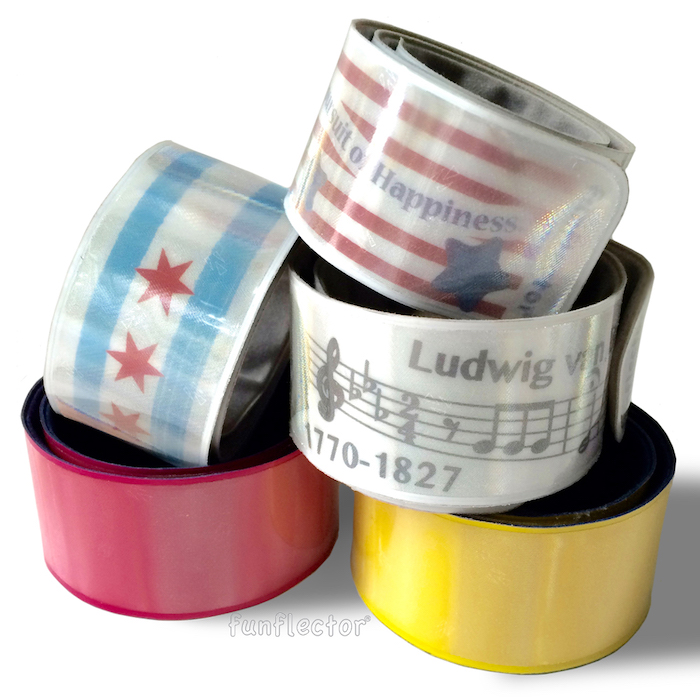Good reflectors have saved lives in the Scandinavian countries for decades. There are funflector® and other brand name as well as generic pedestrian reflectors on the market. What is the difference? And how do know if you are buying a “good” reflector or not?

What do consumers, walking and running groups, PTA boards, corporate buyers and other organizations need to know before they buy safety reflectors?
If you want to make it easy for yourself, look for the mark EN13356, a European standard grown from research in the Scandinavian countries. It’s become the de-facto world standard for reflectors for non-professional use. Behind the fun designs, we take safety very seriously and you should too. Here are the most important things that you need to know:
1. Distance
The purpose of safety reflectors is to let drivers know that you are there so they can adjust their driving accordingly. A reflector with high reflective power will give the driver more time to react than a weaker or no reflector. A driver can notice someone clearly with a good reflector at least 500 ft away. Without a reflector, the distance is about 100 ft, even when wearing white clothing.
Good reflectors save lives by significantly increasing pedestrian visibility up to 500ft or more.
We have actually measured (under ideal conditions) funflector® reflectors to be visible from a car at least 600 ft away from the pedestrian. Testing a reflector is a bit of a hassle, so let’s look at other clues that you can use to figure out how good the reflectors are.
2. Reflector Size and Material
The distance from which a pedestrian with reflectors can be seen depends on the size of the reflector and the reflective power of the material. That is a large part of the EN13356 standard that we discussed in a previous post and the reason that we use 3M Scotchlite and a surface area of more than 15 cm² (2.33 square inches). If you use not-so-reflective material, the reflectors need to be larger to be equally bright.
3. Reflector Color & Logo Printing
Find out how a brightly colored or imprinted reflectors are manufactured. The best and brightest reflectors have color and logo prints UNDER a clear, lime yellow or orange reflective layer. We have seen imprints on top of the reflective layer of budget reflectors, cutting out as much as 50% of the reflective surface. Read more here to learn how the different techniques affect the reflective power.

4. Motion Draws Attention
Reflectors that hang low (where the car headlights shine the strongest) and dangle draw the most attention. When reflector tags dangle, they create a flickering appearance that draws attention. That’s the reason we put funflector® reflectors on ball chains and not on stiff clips. It is also important that both sides of the reflector tags are reflective! When you wrap the slap bracelets around your ankle, it is low down and it moves when you walk, run or bike. You can also wrap it around your wrist, but it does not give quite the same visibility from multiple directions and when you grab your phone to text, drivers won’t see the reflector if they are behind you!
5. Labeling & Information
Is the product properly labeled? Do users get information on how to use reflectors and what the limitations are? The EN13356 standard does not only put requirements on the product, but also the packaging. Look for instructions for use, care, storage, recycling and manufacturer contact. When you buy customized funflector® reflectors from funflector.com, we also custom design the packaging to include your logo and message for maximal impact and professional look.
The funflector team

